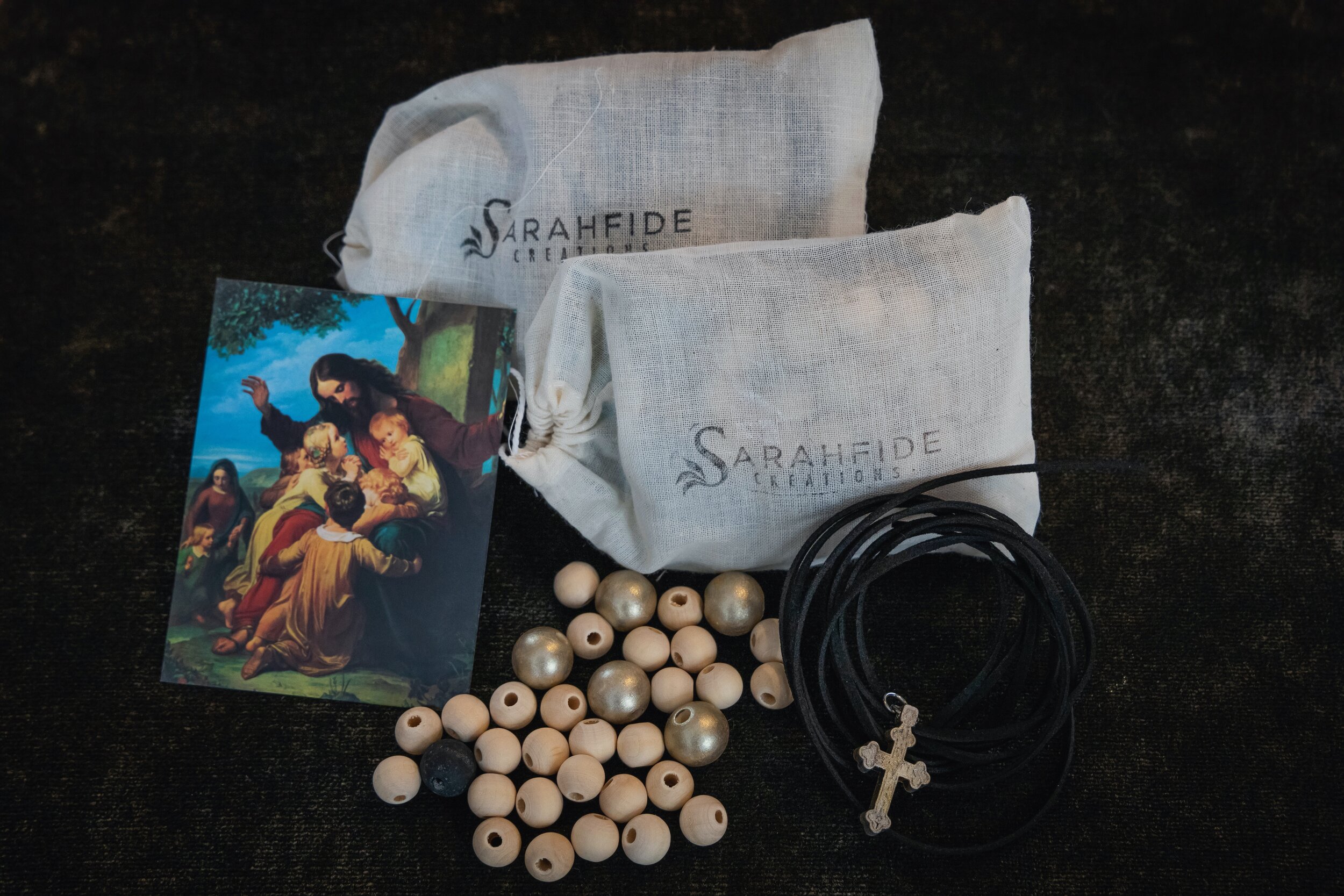Prayer Packages
Anglican Prayer Beads
This Prayer Package contains information for making your own Anglican rosary or prayer beads. You should have: faux leather threading, a wooden cross, 5 large beads, 28 small wooden beads (and an extra for “just in case”), one black closure bead, and a prayer card.
History of Prayer Beads:
Prayer beads have a rich history! A variety of other religious traditions also use prayer beads—Hindus, Buddhists, Muslims, and Sikhs, among others. Christians were not the first to use them, but it seems that Christian use developed separately. Christians have a long tradition of using objects to count their prayers, starting with pebbles and similar objects, moving on to knotted ropes by around the 4th century. Knotted ropes are still used by some Christians, particularly those in Eastern Europe, Egypt, and the Horn of Africa. Strings of prayer beads, which eventually came to be called rosaries, began to appear in the tombs of saints as early as the 7th century. The number of beads on a rosary varies widely. Even within some traditions, such as Roman Catholicism, there are different types of rosaries, but the most typical one has 59 beads total. The Anglican rosary of 33 beads is a relatively recent creation, only dating from the 1980s, but in part takes inspiration from Orthodox prayer ropes, some of which have 33 knots. The number 33 is symbolic, representing the years of Jesus’s earthly life.
Why use beads to pray?
The initial purpose of prayer beads was (and is) to keep count of prayers so the person can focus on the prayer or just meditate on Jesus. Having a tactile object like a bead in the hand can help with that. The repetition of the prayers also can have a calming and meditative effect on the mind and body.
Stations of the Cross
This Package contains information for making a handbound book of the images representing the 14 Stations of the Cross.
History of The Stations of the Cross
The first evidence for the development of the Stations of the Cross appears in the 15th century. They were intended as a way for those unable to take a pilgrimage to Jerusalem to experience something analogous to the traditional devotional locations along the Via Dolorosa in Jerusalem associated with Jesus’ passion (though the Via Dolorosa wasn’t yet known by that name). Initially there wasn’t a uniform number of stations, nor were the commemorations of the stations the same as they currently are. Their popularity may have advanced in Europe when Jerusalem was under Ottoman control, and open Christian devotion in Jerusalem was discouraged. It took a while for them to catch on (perhaps in part because a specific order, the Franciscans, was initially granted control of their use), but today there are Stations of the Cross in almost every Roman Catholic church, and in some Anglican, Lutheran, and Methodist churches too.
The 14 stations themselves focus on scriptural or traditional events from the time Jesus is delivered to Pilate for judgment through his death on the cross. Fridays in Lent are an especially suitable time for this devotion, which can be done on your own or with others. If you attend the Stations of the Cross at Saint Mark’s, you might recognize some of the collects - some are also used in the Daily Office, and some are the appointed collects for specific Sundays. The stations that we have printed out for you were compiled by Kendra Tierney and are illustrations from vintage editions of the Roman Missal, which is a liturgical book used by the Roman Catholic Church. For parents, she has a website (www.catholicallyear.com) which has some very nice resources, and if you want to download additional coloring pages for other children in the family, you can get them there.
We’d like to offer this project to you as a way to experience your very own pilgrimage while at home. We hope you will enjoy meditating on each image as you color it (if you choose to do that), and holding or displaying the objects associated with the stations. In this way, you can walk the path that Jesus walked to the cross, and even imagine walking it with him.




